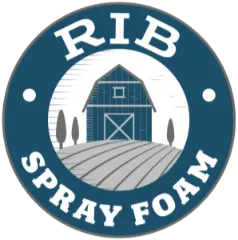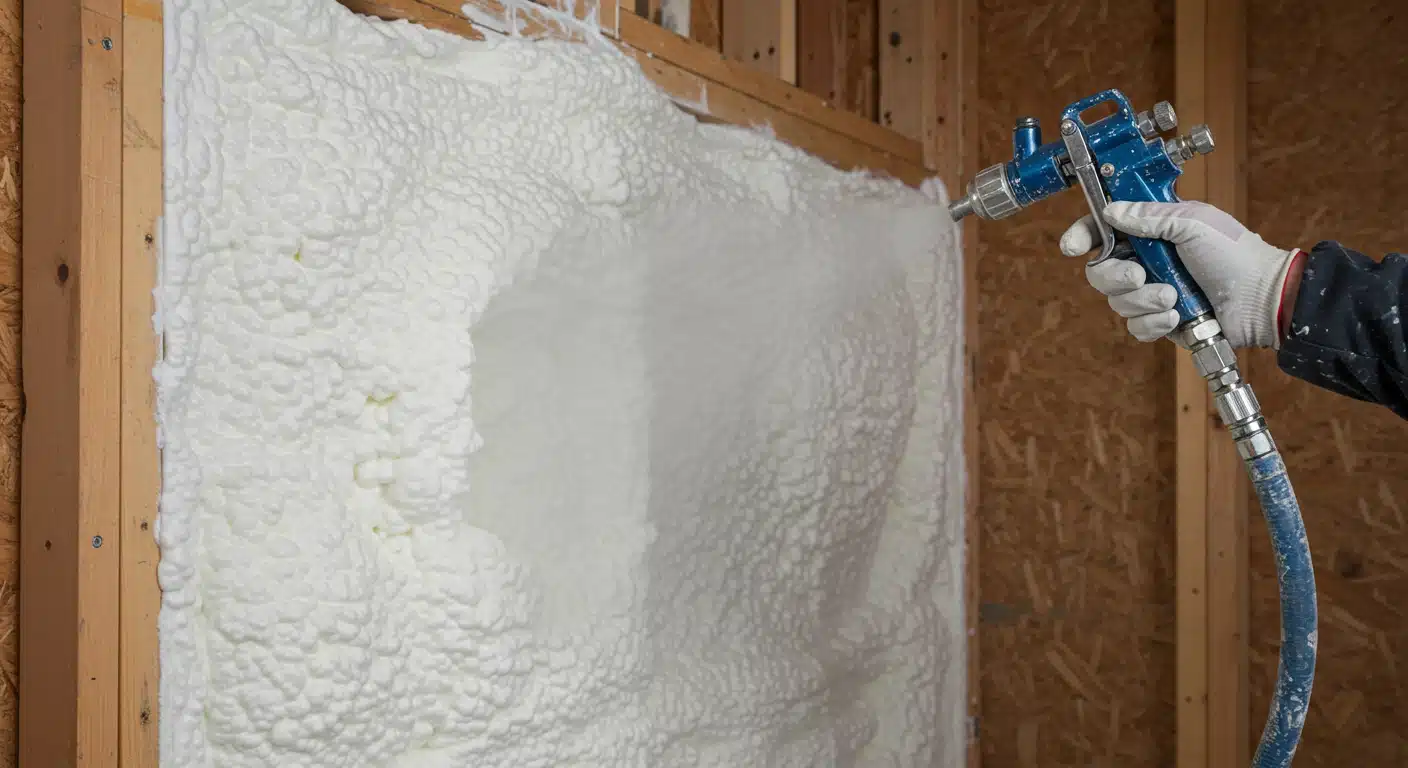If you’re searching for a way to keep moisture and mold out of your home for good, you’re not alone. We hear this every day from homeowners across the region families dealing with lingering musty odors, warped floorboards, or sudden spots of mold appearing out of nowhere. At Rib spray foam Company, we’ve seen how damaging hidden moisture can be, not just to your structure but to your peace of mind. And we’ve also seen how the right insulation can change everything.
Residential spray foam insulation doesn’t just keep your house warm. It helps create a controlled environment where mold and moisture have no room to thrive. This guide walks you through exactly how it works and why we’ve made it our business to protect Colorado homes with it. By the end, you’ll know what makes spray foam insulation one of the most effective barriers against mold and moisture and how Rib spray foam Company can help you get it right the first time.
How Residential Spray Foam Stops Moisture Before It Starts
Stopping mold starts with stopping moisture. Most homes aren’t sealed tight enough to keep humidity out or prevent air leaks that draw in moist outside air. That’s where spray foam insulation makes a measurable difference.
Unlike fiberglass or cellulose, spray foam expands to fill every gap, crack, and cavity. Once cured, it forms a dense, airtight barrier that keeps outdoor air and the moisture it carries on the outside. We apply it precisely where leaks tend to hide: in crawlspaces, attics, basements, rim joists, and wall cavities. It’s like shrink-wrapping your home’s vulnerable areas.
We’ve insulated hundreds of homes in Colorado where seasonal temperature swings create condensation risks. Spray foam’s air-sealing capability drastically reduces the amount of humid air that enters your home and stops warm indoor air from reaching cold surfaces where it could condense. No condensation, no mold.
Closed-Cell Spray Foam as a Moisture Barrier
Closed-cell spray foam insulation contains tightly packed cells that resist both air and water. When applied to foundations or basement walls, it adds structural strength while forming a moisture barrier. This is especially valuable in below-grade spaces where moisture intrusion is common.
We recommend closed-cell foam in any area exposed to moisture from crawlspaces to garages because its low permeability rating means water vapor can’t easily pass through it. In homes we’ve worked on, this single upgrade has helped eliminate recurring mold problems that previous insulation methods couldn’t fix.
Eliminating Humid Air Pockets in Walls and Roofs
Most mold colonies begin in hidden places inside walls, behind drywall, or under roof sheathing. Spray foam insulation eliminates the small air pockets that allow condensation to form. That’s how we stop mold from getting a foothold. In colder months, where warm indoor air rises and meets cold attic surfaces, our foam system seals off the movement completely.
Homeowners are often surprised when they see how many points of air intrusion we find during inspection. Once sealed with spray foam, those areas don’t just insulate better they dry out and stay that way.
Why Mold Needs Moisture And Why Spray Foam Cuts the Supply
Mold needs three things to grow: organic material (like wood or drywall), oxygen, and moisture. Of those three, moisture is the only one we can realistically control. By removing it, we remove the conditions mold needs to survive.
Our insulation process is designed to control indoor humidity by reducing unwanted air exchange. This makes your entire HVAC system more efficient and keeps relative humidity in check.
In dozens of cases, we’ve seen clients struggle with mold that returned year after year—until we removed the old insulation, sealed the structure with spray foam, and resolved the root cause. After that, no more remediation calls. No more repairs.
Spray Foam Helps Stabilize Indoor Humidity Levels
With proper spray foam insulation, you don’t just block leaks you create consistency. That stable indoor environment makes it easier to keep relative humidity levels between 30–50%, which is outside mold’s preferred range.
Our clients often tell us that after we insulate their attic or crawlspace, their dehumidifiers barely run. That’s not a coincidence it’s the result of real air control.
Spray Foam Reduces the Risk of Hidden Condensation
Condensation is one of the most overlooked mold triggers. It forms when warm indoor air meets a cold surface often inside walls or under poorly insulated roofs. Once that moisture is trapped, mold can take hold in less than 48 hours.
Spray foam solves this by eliminating temperature differentials inside your walls. When we apply foam in attics and wall cavities, we create a thermal barrier that keeps surfaces warmer and reduces the chance of dew point being reached indoors.
Long-Term Prevention vs. Short-Term Fixes
Homeowners are often faced with temporary fixes: replace a piece of drywall, run a dehumidifier nonstop, scrub away mold with bleach. But these solutions only treat the symptom. Spray foam insulation, applied correctly, deals with the cause.
We take a diagnostic approach to every home. Our crew inspects vulnerable areas, looks for recurring moisture patterns, and installs the foam where it makes the biggest difference. That’s how we’ve helped clients solve mold problems that had gone unresolved for years.
Why Retrofitting With Spray Foam Makes Sense
Older homes were never designed to be airtight. Many have inconsistent insulation, gaps in the building envelope, or outdated materials that can trap moisture instead of repelling it. Retrofitting with spray foam transforms those weak points into sealed, insulated areas.
We’ve helped homeowners throughout Colorado retrofit attics, rim joists, basements, and garages turning moisture-prone zones into clean, dry, mold-resistant areas. It’s a one-time fix that protects your home for decades.
Spray Foam’s Role in Total Moisture Management
Spray foam isn’t a silver bullet, but it is the foundation of a comprehensive moisture control strategy. When paired with proper ventilation, foundation drainage, and roofing systems, it locks in long-term protection.
Our team coordinates with your home’s HVAC and building systems to make sure the insulation works in harmony not against them. That integrated approach is why our spray foam projects succeed where others fall short.
Your Path to a Protected Home Starts Now with Rib spray foam Company
Mold is persistent but it’s not unbeatable. With the right insulation and a trusted team who understands your home, you can stop mold and moisture problems at the source.
Spray foam insulation gives you more than energy savings. It gives you control over your home’s environment, from the attic to the crawlspace. No more guessing where the leaks are. No more chasing mold that keeps coming back.
We’ve helped homeowners across Colorado breathe easier literally by turning vulnerable spaces into clean, dry, and healthy areas. If you’re ready to take that next step, we’re here to help.
Ready to Experience the Rib spray foam Company Difference?
Call us at (970) 518-2883 or email [email protected] to schedule your consultation. Let’s protect your home from mold and moisture for good.
Have More Questions? We’ve Got Answers
How exactly does Residential spray foam insulation stop mold from growing?
It stops mold at the source—moisture. By sealing air leaks and forming a moisture-resistant barrier, spray foam keeps out humid air and condensation, making it hard for mold to grow.
Will Residential Spray Foam Insulation keep my crawlspace dry?
Yes. When applied to crawlspace walls and rim joists, residential closed-cell spray foam works as both an air seal and vapor barrier. It helps keep moisture out and creates a dry, controlled environment—ideal for preventing long-term issues.
Can Residential spray foam be used to fix existing mold problems?
It can help stop mold from returning. After professional mold remediation is completed, residential spray foam insulation seals the space to block future moisture—preventing the conditions mold needs to grow back.
Does spray foam replace the need for a dehumidifier?
In many cases, yes. By stopping moist air from entering your home, spray foam reduces humidity levels enough that a dehumidifier may become unnecessary or used far less often.
What’s the difference between open-cell and closed-cell spray foam for moisture control?
Closed-cell is better at resisting water and vapor. We usually recommend it for below-grade areas, crawlspaces, and anywhere with high moisture exposure.
How long does Residential spray foam insulation last?
Residential spray foam insulation is built to last. It won’t sag, settle, or degrade—making it a permanent, long-term solution for energy efficiency and moisture control.
Will it reduce my energy bills too?
Yes. Many of our customers see up to 40% savings on heating and cooling costs after upgrading to spray foam insulation.
Is spray foam safe for indoor air quality?
Absolutely. Once cured, spray foam is inert and does not release harmful emissions. It can actually improve air quality by blocking outdoor pollutants and allergens.
Can you apply spray foam to homes with existing insulation?
Yes. We often remove old, ineffective insulation and replace it with spray foam to eliminate mold and moisture issues at the source.
How soon can I schedule an inspection with Rib spray foam Company?
Just give us a call at (970) 518-2883 or email us at [email protected]. We’ll set up a no-pressure consultation and talk through what your home needs.



